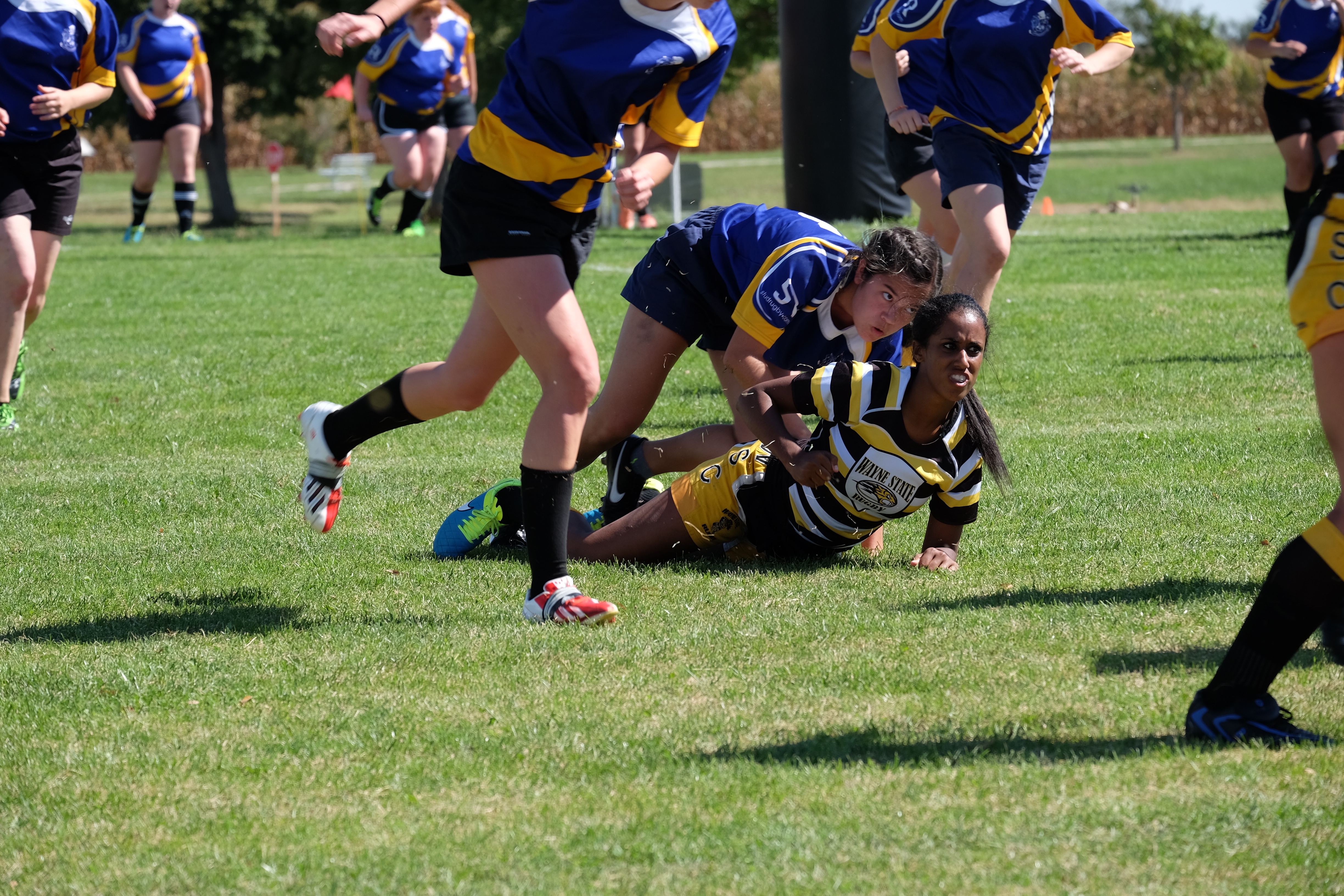![]()
Rugby, being a collision sport, requires rugby players to take many measures to prevent concussions.
Rugby involves tasks such as diving for the loose ball and tackling members of the opposite team. These activities, which are done without helmets or pads, are rehearsed tirelessly in practice for the sake of preventing head injuries.
“We rerun drills constantly,” Megan LaFond, lock for John Brown University’s women’s rugby club, said. “We sometimes spend an hour and a half doing three different tackle drills alone so that we can really engrain that muscle memory on different techniques of how not to get hurt.”
A concussion occurs when the skull is impacted from an outside force. This force then causes the brain, which rests in the cranial cavity, to be thrown against the walls of the cavity. This impact causes bruising on
the brain. Due to the physical nature of rugby, injuries of this type occur from time to time.
Such an injury found Jessie Brandon on Feb. 20, when John Brown University’s women’s rugby club squared off against Tulsa. Brandon, who plays for the University, opted to play for Tulsa, which was short on players for that day’s match. Brandon soon found herself at the bottom of a struggle for the ball against her own team. Teammate Kelsey Bredthauer said that this struggle resulted in multiple impacts to Brandon’s head.
Following her concussion, Brandon had difficulty with everyday tasks such as looking at computer screens and spelling words. Because of the severity of her symptoms, Brandon is now living at home for the remainder of the spring semester.
Jarrod Heathcote, coach of the University’s women’s rugby club, mentioned that in such a high-impact sport, injuries such as this and others are not unusual.
“There’s always the possibility of injury,” Heathcote said. “Sprains, broken bones, muscle contusions and those sorts of things are pretty common. Most of the time, we see cuts, scrapes and bruises. Those are pretty typical, but any time you’re putting your body into contact, you’re always going to see some issue.”
Todd Bowden, athletic trainer for the University, said that no matter what the severity of the injury or how it was received, the recovery process for a sport-induced concussion is the same across the board.
“The only real way to manage it is to let their brain rest,” he said. “Then they need to be symptom-free before they start any kind of activity. That activity is going to be a graduated program. They start on an exercise bike, and then you graduate them over five days.”
Though injuries to the head are a risk in such a sport, they are not as much of a risk as one might think. Lafond said that due to the rigorous training involved in rugby, she and others who play the sport rarely encounter the injury.
“You play it safe, you play it well, you put the time in at practice and it’s just as likely as just about any other sport,” she said.
“We make the girls very aware of the fact that there can be some physical issue of playing rugby,” Heathcote said. “People are very aware of it and know that going into contact sports.”
Though many sports risk head injury, athletes still choose to go out and compete. Bowden said that playing in spite of the risk comes down to if it is a risk worth taking.
“It’s risk versus reward,” Bowden said. “The rewards outweigh the risks.”
LaFond agreed with Bowden’s sentiment. She said that the skills and experiences she has gained through rugby far outweigh a potential head injury.
“You run that risk for the love of the game, for the love of community and for the love of trying to make yourself a stronger and faster individual,” Lafond said of risking a head injury. “Sometimes, those things are worth the risks.”





